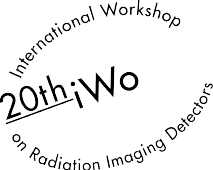Speaker
Description
Spongious materials, such as trabecular bone, are currently broadly investigated structures as they represent a key element for proper operation of bone in terms of its load bearing function and permeability. Advanced mechanical analysis of the spongious materials has to be carried out volumetrically in micro-scale as the cellular structure of the material is very complex and has fundamental effects on the macro-scale properties [1]. Moreover, reliable analysis requires environment conditions equivalent to the physiological conditions in real body. In this work, an in-house designed table top loading device equipped with a bioreactor is used for in-situ compression of the spongious sample in simulated physiological conditions. 4D computed tomography is used as a tool for an advanced volumetric analysis of the deforming microstructure of the specimen.
The compact in-house designed table top loading device was used for mechanical compression of the spongious specimen during the experiments.
The device has loading capacity 3 kN with 1 micrometer position tracking accuracy and sub-micron position sensitivity. The device is equipped with load-cell and position encoders for real-time closed loop control of the experiment in both displacement and force driven mode. The bioreactor with closed circulation of the fluid is a modular optional part of the loading device. It is equipped with a simulated body fluid reservoir with a heating device, a fluid pump, and a thermometer for closed-loop control of the temperature and flow of the fluid. The specimen was placed in a loading chamber consisting of a thin carbon-fibre composite tube with nominal shell thickness 0.45 mm ensuring low attenuation of X-rays. It was submerged in a simulated body fluid from the bioreactor. The loading device with the bioreactor was placed directly on the rotation stage of the modular X-ray imaging device TORATOM [2]. As the loading device is equipped with slip-ring cable system, it can perform an unlimited number of revolutions during on-the-fly scanning procedure.
In this study, two types of X-ray imaging detectors were used: i) scintillating large-area flat panel detector Perkin Elmer XRD1622 (resolution 2048×2048 px, physical dimensions 410 x 410 mm) and ii) large area single photon counting detector (LAD), the 10 x 10 TimePix assembly with resolution 2560×2560 px (single TimePix detector - resolution 256 x 256 px, pixel size 55 x 55 µm). As the low-attenuating specimen was submerged in the fluid with considerable attenuation of X-rays, image quality and contrast of the both types of detectors were evaluated and analyzed. The specimen was compressed with low loading velocity until collapse of the structure. Continuous on-the-fly tomography capability of both detectors was evaluated and is discussed in the study.
A set of volumetric data capturing deformation of the specimen during the experiment was prepared from the images acquired by both detectors. Digital image correlation (DVC) algorithm was used for evaluation of the volumetric strain fields in the specimen. To conclude, a sophisticated experimental procedure for an advanced analysis of the spongious sample based on the loading device with bioreactor, 4D computed tomography and photon counting detector was introduced.
ACKNOWLEDGEMENT
The research has been supported by the Interreg V-A Austria - Czech Republic programme in frame of the project Com3D-XCT (ATCZ38) and Operational Programme Research, Development and Education in project INAFYM (CZ.02.1.01/0.0/0.0/16_019/0000766).
REFERENCES
1. D. Kytyr, P. Zlamal, P. Koudelka, T. Fila, N. Krcmarova, I. Kumpova, D. Vavrik, A. Gantar, S. Novak, Deformation analysis of gellan-gum based bone scaffold using on-the-fly tomography, Materials and Design 134 (2017) 400–417.
2. I. Kumpova , D. Vavrik, T. Fila, P. Koudelka, I. Jandejsek, J. Jakubek, D. Kytyr, P. Zlamal, M. Vopalensky, A. Gantar, High resolution micro-CT of low attenuating organic materials using large area photon-counting detector, J. Instrum. 11 (2016).
